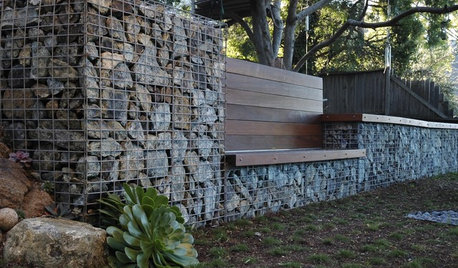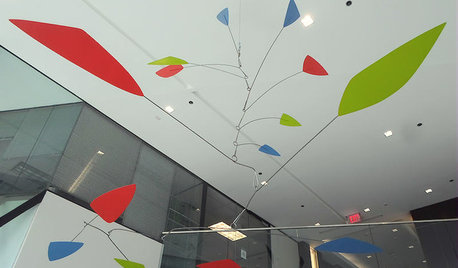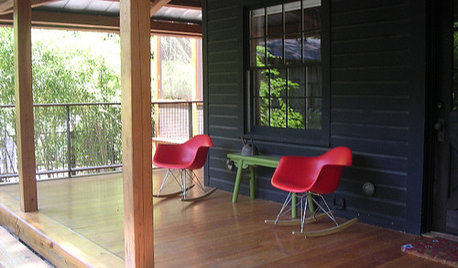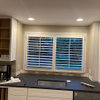tie rebar with plastic ties?
bill_g_web
17 years ago
Related Stories

Woven Wood Shades Tie Rooms Together
Contrasting sharp modern edges or complementing a contemporary look, these window shades are a lovely finishing touch for any room
Full Story
MY HOUZZMy Houzz: Plastic Is King in an Out-of-This-World Home
Packed with wild colors, vintage collectibles and all things plastic, this Netherlands rental boldly ventures into futuristic territory
Full Story
GARDENING AND LANDSCAPING7 Out-of-the-Box Retaining Wall Ideas
Go Beyond Railroad Ties With Stylish Rock, Metal, Blocks, and Poured Concrete
Full Story
KITCHEN CABINETSGet the Look of Wood Cabinets for Less
No need to snub plastic laminate as wood’s inferior cousin. Today’s options are stylish and durable — not to mention money saving
Full Story
DECORATING GUIDESFix Those 'Whoopsies': 9 Fast Solutions for Decorating Mistakes
Don't suffer in silence over a paint, furniture or rug snafu — these affordable workarounds can help
Full Story
KITCHEN STORAGEGet It Done: How to Clean Out the Pantry
Crumbs, dust bunnies and old cocoa, beware — your pantry time is up
Full Story
LIFE10 Steps for Saying Goodbye to Sentimental Objects
Are keepsakes cluttering your space and your life? Consider this approach for letting go and moving on
Full Story
ARTFrom the Artist: How to Make a Real Mobile
It’s all in the balancing points: A top mobile designer shows how to create a Calder-inspired installation of your own
Full Story










mag77
bill_g_webOriginal Author
Related Professionals
Barrington Hills Kitchen & Bathroom Designers · Flint Kitchen & Bathroom Designers · Gainesville Kitchen & Bathroom Designers · Pleasanton Kitchen & Bathroom Designers · Yorba Linda Kitchen & Bathroom Designers · Fullerton Kitchen & Bathroom Remodelers · Athens Kitchen & Bathroom Remodelers · Ewa Beach Kitchen & Bathroom Remodelers · Three Lakes General Contractors · Bremerton General Contractors · Coffeyville General Contractors · Delhi General Contractors · Panama City Beach General Contractors · Renton General Contractors · Tamarac General Contractorsformulaross
mag77
bill_g_webOriginal Author
User
brickeyee
lazypup
bus_driver
bill_g_webOriginal Author